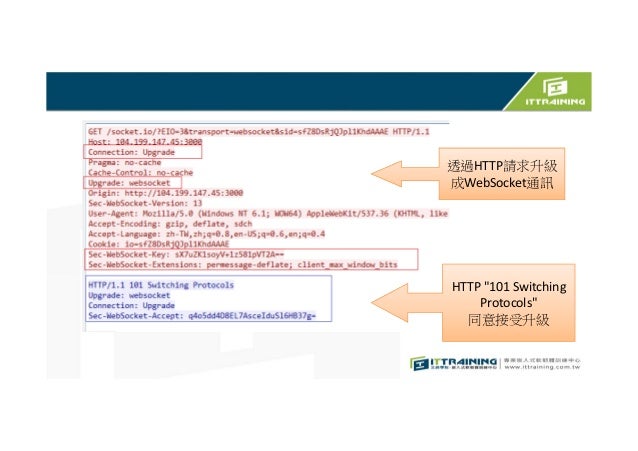

- #Livereload status 101 switching protocols upgrade#
- #Livereload status 101 switching protocols code#
You can even make asynchronous requests to load additional data (often in the form of JSON or XML) while you’re interacting with the web page, which is how single-page apps work. This can be HTML, CSS, Javascript, images, and more. your browser) to the server and receiving all the necessary data to load the webpage as a response from the server. The way you traditionally interact with a web site is by issuing an HTTP request from your client (i.e. Back to the instant message example, whenever you send a new instant message in a chatroom, your client would alert the server of the new message, then the server would immediately broadcast that message to all of the other clients, and finally those clients would immediately receive and render the message. WebSockets create links, or “sockets,” between two parties and allow for two-way communication. These are all examples of how WebSockets can be used in the wild. Same thing if you’re on a company’s homepage and you see a stock ticker changing regularly, or if you’re on a sports site keeping track of a game score that’s updating on its own. Imagine you’re using a browser-based instant messaging application and you’re chatting with a friend – how do those messages automatically appear in your browser without you having to refresh? While the app doesn’t necessarily have to be using WebSockets – there’s a good chance that it is.

Whether you agree or disagree that WebSockets have enhanced the current state of web development, it’s at least a good idea to understand how they actually work. Before I get into the nitty-gritty about how WebSockets function, I want to provide some real-life examples of how they could be used to make sure we all know what they are. WebSockets really aren’t too difficult to understand and implement, and they can lead to some really cool functionality in your app. At least I was in that boat for a long time before I started using them. AFAICT, the requests are sending the same headers in both cases.As a developer you may have heard the term WebSockets thrown around in the past few years, without fully understanding what they are. Firefox issue, as webpack works, so there must be some way to configure the socket so that Chrome will let it through to localhost. It then receives its normal messages.Īny idea why webpack's socket connection works in Chrome but the client's doesn't? This clearly isn't just a Chrome vs.

#Livereload status 101 switching protocols upgrade#
It makes a call to ws://localhost:3000/sockjs-node and gets the Upgrade response, with a status of 101 Switching Protocols. What's strange is that the webpack live reload socket connection works just fine in Chrome. With Chrome, the server never seems to get the upgrade event that's part of connecting the websocket, so it seems like the browser is blocking the connection entirely.
#Livereload status 101 switching protocols code#
Code 1006 seems to mean that the browser closed the connection "abnormally", but the reason is blank. I added listeners to the hook and do see error and close events. react-use-websocket then tries to open it again, with the same result. It sits there in a pending state and eventually times out. When using Chrome 103, the server returns the page, but the websocket never connects. The server returns the page, the client code makes the websocket connection to ws://localhost:3000/user and then starts receiving messages. When using Firefox 102, everything works fine. In the dev environment, the express server and a webpack dev server (via Create React App) are running in a node 16 docker container, serving the page on localhost:3000. The client is using react-use-websocket to make the socket connection and the server is using ws to handle it. The client makes REST calls as well as websocket connections to the server.

I'm working on a project with a React frontend that talks to an express backend.


 0 kommentar(er)
0 kommentar(er)
